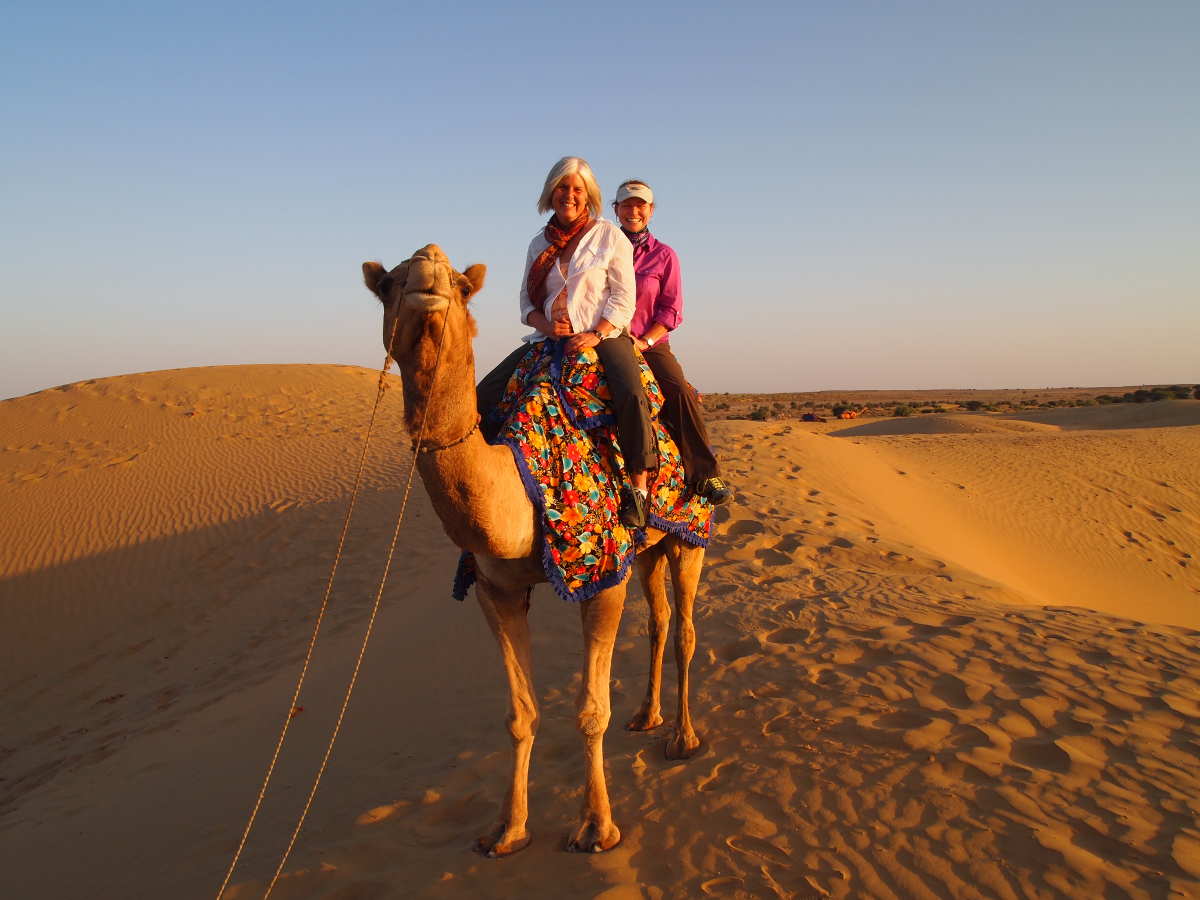ACTIVITIES
Safari
———
We arrange camel safaris / rides along the sand dunes to downtown Pushkar and explore unspoilt rural terrain en-route.
Swimming Pool
————————-
The serene pool at Dera Masuda creates an illusion of a shimmering lake, it has a huge deck of more than 15000 sq ft. to relax and enjoy lovely sunsets.
In and around Pushkar
————————————–
Pushkar Fair:
The Pushkar Fair is an annual fair held in the Hindu month of kartik (October /November).
During this period Pushkar and its surroundings come alive as the much awaited annual camel & cattle fair begins at Pushkar. Hotels are full to their capacity; tents and campsites suddenly spring up to accommodate the thousands of pilgrims, tourists and villagers with herds of cattle, horses and camels who come here to participate in this grand annual event.
Most people associate Pushkar Fair with the world’s largest camel fair. It is also an occasion for villagers from far and near to collect together and enjoy in the dazzling style and colors, a welcome break from their harsh life in the desert.
It is also an occasion for Hindu pilgrims to converge for a holy dip in the sacred Pushkar Lake and pay obeisance at the only temple in the world of Lord Brahma, the Creator of the Universe.
The grand occasion of Pushkar festival is definitely a priceless treat for those who wish to eye the vibrant culture and traditions of Rajasthan. Travelers partaking in the festival get a lifetime opportunity of bagging some traditional Rajasthani souvenirs such as ornaments, garments, footwear, artifacts and a lot more. Ornaments of silver and bead necklace, patchwork, printed textiles as well the famous tie and dye fabrics from Ajmer are the main attractions of the Pushkar Fair.
Brahma Temple:
Lord Brahma Temple is highly recognizable from anywhere in Pushkar due to its bright red shikar (spire), which can be seen from a long distance.
The most famous temple is the Brahma Temple, said to be the only temple of Brahma in the world dedicated to this deity. It stands on a high platform with the Marble steps leading up to it.
A silver turtle is set on the floor facing the Sanctum-Sanctorum or Girbha-griha. Around the turtle the Marble floor is inset with hundreds of silver coins. Coins engraved with donors names are also embedded in the walls.
Peacocks adorn the temple walls as they are supposed to be the vehicle of Lord Brahma’s consort Saraswati. A small image of the milkmaid Gayatri, flanks the four-faced image of lord Brahma and is called Chaumurti
The sanctuary has silver doors inside a carved marble gateway.
Savitri Temple:
Situated on the peak of the Ratnagiri Hill, the Savitri Temple is dedicated to Savitri, Lord Brahma’s wife. It was built in 1687 and pilgrims need to trek up the hill in order to reach the shrine of the temple.
The temple houses the statue of Goddess Savitri and offers good views of the surroundings, including the sand dunes of nearby villages and of the Pushkar Lake.
Legend has it that the presence of Savitri was required in a ‘yagna’ that was done by Lord Brahma but she kept Him waiting. Lord Brahma irritated with her behavior, married a milkmaid named Gayatri. Savitri became furious at this and cursed him that he will only be worshiped once a year and only in Pushkar.
Rangji Temple:
Rangji Temple is dedicated to Rangji, an incarnation of Lord Vishnu, the preserver of the Hindu Trinity.
In 1823, the temple was built by Seth Puran Mal Ganeriwal and has a South Indian architectural style, though Mughal architecture peeks from some points.
It comprises two big structures of gatekeepers in front of the main gate and the high rising ‘Gopuram’.
The temple houses an image of Garuda, Lord Vishnu’s mount and is considered one of the holiest temples of Pushkar.
Aptaeshwar Temple:
The three oldest temples in Pushkar namely Varaha, Brahma and Aptaeshwar temples were built in the 19th century AD.
The temple is completely devoted to the worship of Lord Shiva. It was completely destroyed during the rule of Aurangzeb but was rebuilt soon.
The whole temple has sunk over time and is not partially underground. In the centre of the main hallway, is the Shivalinga.
Varaha Temple:
The Varaha Temple in Pushkar was built by King Anaji Chauhan in the 12th century and is dedicated to Varaha, Lord Vishnu’s incarnation in the form of a wild boar.
The temple houses the idol of Lord Varaha that is white in colour and has a height of 2 feet. Various sculptures, elegant carvings, life-size statues of door men and gold-styled pillars depicting Garuda, the mythical bird are situated within the temple.
The temple was destroyed by Emperor Aurangazeb but in 1727, it was reconstructed by Raja Sawai Jai Singh of Jaipur.
Pushkar Lake:
Hindus from all across India consider Pushkar Lake to be one of the most sacred lakes of India. According to legend, the origin of this lake was the lotus flower petals that fell on earth from Lord Brahma’s hands.
The lake is surrounded by 52 palaces, 400 temples and 52 bathing ‘ghats’, which are a series of steps leading to the lake.
Every year in November, pilgrims take a holy dip in this lake. It is believed that the water of the lake is capable of cleansing sins and curing skin diseases. A fair called Pushkar Fair is also held near this lake, every year.




